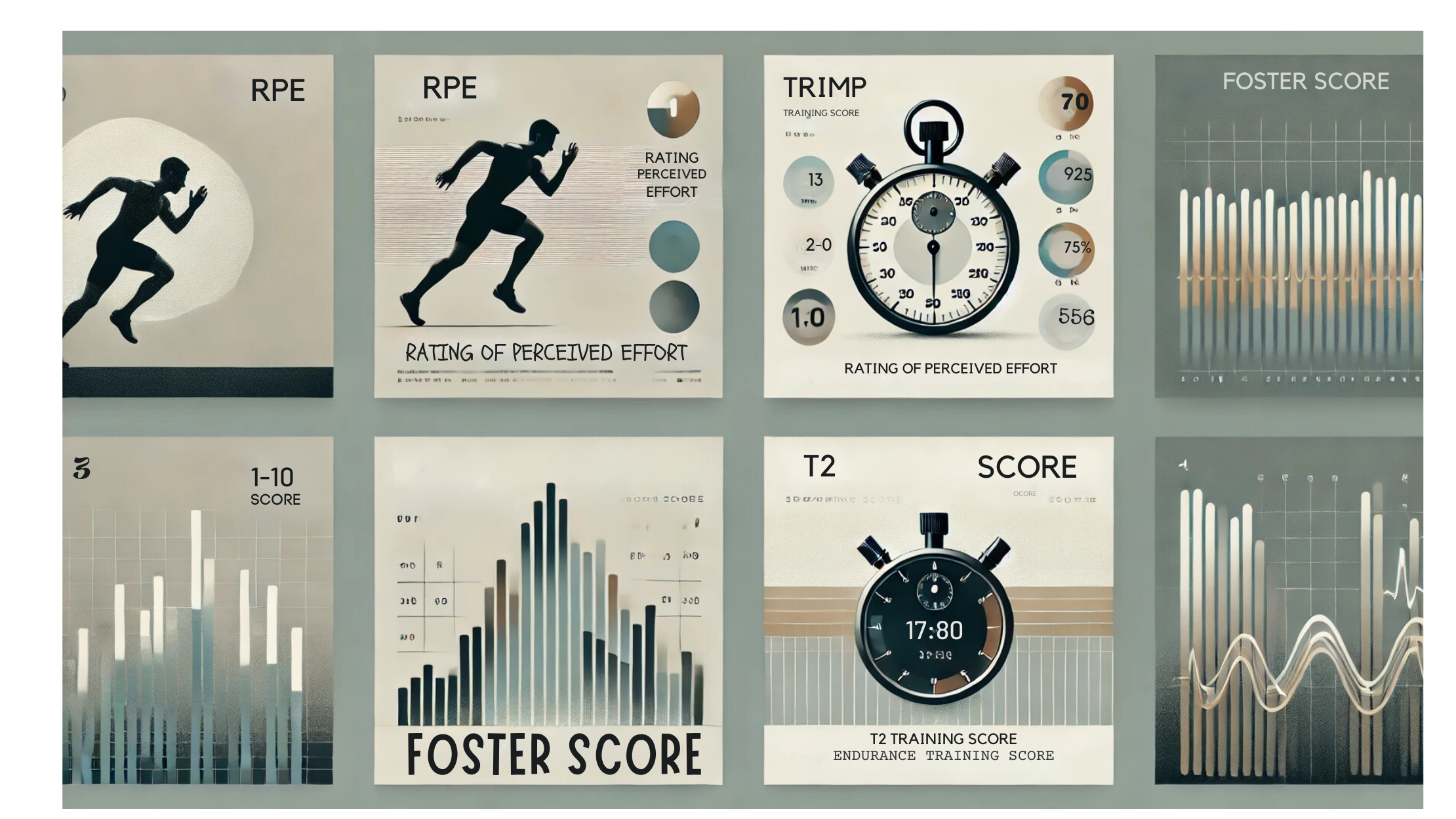This post will compare four popular metrics—RPE, Foster Score, TRIMP, and T2 Score Endurance Training Score (ETS) — explaining how they work, their strengths and weaknesses, and when they’re best suited for use.
Whether you’re a beginner or an elite athlete, understanding your training load is key to improving performance, avoiding injury, and optimizing recovery. But with so many different ways to measure training load, it can be challenging to decide which one is right for you.
Overview of Each Training Load Metric
1.Rating of Perceived Exertion (RPE)
RPE, or Rating of Perceived Exertion, is a simple and subjective measure of workout intensity. Athletes rate how hard they feel they’re working on a scale, usually from 1-10, with 1 being very easy and 10 being maximum effort.
•How It Works: RPE is based solely on personal perception. You assess your effort level during or after a workout and assign a score from 1 to 10 (modified Borg Scale).
•Best For: Beginners, those without access to technology, or anyone looking for an easy and intuitive way to track training load.
2. Foster Score
The Foster Score builds on RPE by adding a quantitative element: time. Developed by Dr. Carl Foster, this score combines RPE with workout duration to give a more complete picture of training load.
•How It Works: Multiply the RPE score by the workout duration in minutes:
•Best For: Endurance athletes who want a simple, low-maintenance way to quantify training load without needing heart rate data.
3. TRIMP (Training Impulse)
TRIMP, or Training Impulse, was developed by Dr. Eric Bannister as a way to objectively measure training load. TRIMP combines workout duration and heart rate data, using different weighting factors for heart rate zones to capture the physiological impact of intensity.
•How It Works: Multiply the workout duration by a heart rate-based intensity factor:
•Best For: Athletes with access to heart rate monitors who want a data-driven approach to tracking training load and progress.
4. T2 Score (Endurance Training Score (ETS))
The T2 Score, created by Dr. Tony Rice, goes beyond single-session load by including different spots modalities. It combines time in each training zone, a correction factor for each intensity zone, as well as a scaling function for each sport modality.
•How It Works: First, calculate the time in each training zone, then multiply the time in each zone by the scaling factor, then multiply that by the scaling function for each sport. (See the blog for more detail)
•Best For: Advanced athletes managing high volumes who undertake many different sport types when training. Also a benefit when doing medium and short duration high intensity intervals.
Comparing the Key Features of Each Metric
Each of these metrics offers a unique perspective on training load. Here’s a quick comparison across key features:
Metric Ease of Use Subjective or Objective Required Equipment Best For Key Limitations
RPE – Very easy Subjective, intuitive tracking. Influenced by mood, sleep, etc.
Foster – Easy Subjective/Objective Stopwatch.
TRIMP – Moderate, Objective Heart Rate Monitor.
ETS (T2) – Complex, Objective, requires HR Monitor, requires a platform to calculate
Strengths and Limitations of Each Metric
Each method has its own set of strengths and weaknesses, which can make it better suited to certain athletes or training goals:
RPE
•Strengths: Simple, intuitive, and doesn’t require any equipment. It’s useful for quickly assessing how hard you’re working.
•Limitations: Highly subjective; effort perception can vary based on factors like mood, stress, and sleep.
Foster Score
•Strengths: Combines subjective RPE with duration for a more rounded measure of training load. Great for athletes who want a low-tech option.
•Limitations: Does not account for cumulative fatigue or physiological response to different intensity levels.
TRIMP
•Strengths: Objective and science-backed; accounts for workout intensity by using heart rate data, which improves accuracy.
•Limitations: Requires a heart rate monitor and does not account for residual fatigue from recent workouts.
ETS (T2) Score
•Strengths: Includes sports specific scaling factor and has a greater correction factor for the higher intensity ranges. Comprehensive and suited for high-volume training.
•Limitations: Complex calculation, and requires a platform to calculate.
Which Training Load Metric is Right for You?
Choosing the right metric depends on your goals, training style, and resources:
•RPE: Ideal for beginners or athletes who prefer simplicity. If you’re new to training load metrics, RPE is a great starting point.
•Foster Score: Perfect for endurance athletes who want a quantitative measure but don’t have access to heart rate monitors. It’s useful for general training load management.
•TRIMP: Best for athletes who have access to heart rate data and want a more objective, data-driven measure of load. TRIMP is ideal for those interested in detailed tracking over time.
•ETS (T2) Score: Suited for advanced athletes who are training at high volumes and need to track intervals and multi sport training
View more content like this

How Sports Team Management Apps can help Coaches
When I began a career in sports science, I had big hopes and dreams. I had studied hard, understood the theory, and was excited to
Rowing Australia using Ludum to Prepare for World Championships
When I began a career in sports science, I had big hopes and dreams. I had studied hard, understood the theory, and was excited to
We are all Sports Performance Analysts
Times have changed… Now anyone who works with athletes needs to be a Sports Performance Analyst… Dr Mark Homer looks at how coaches, teams and individuals



